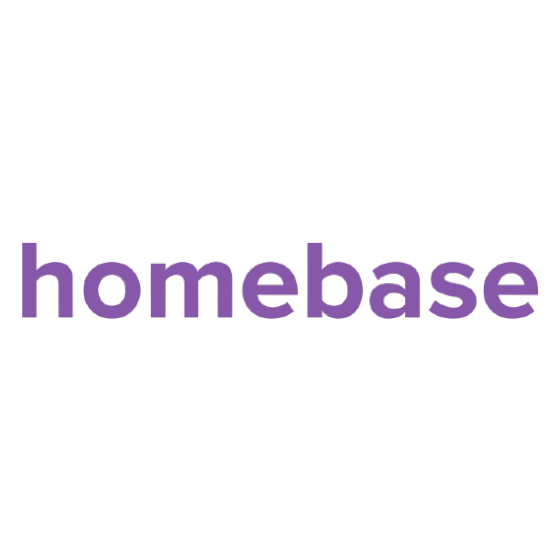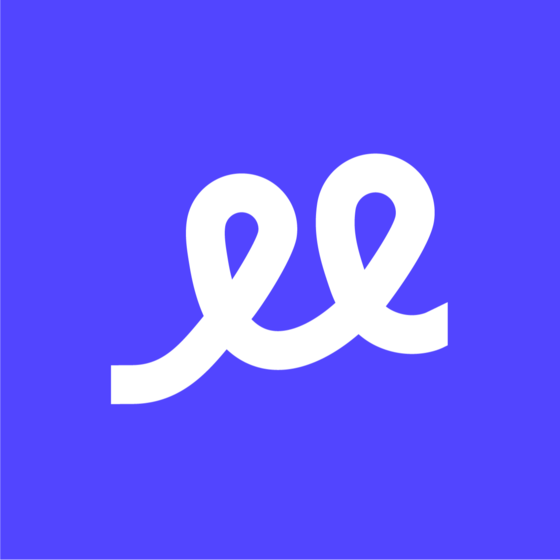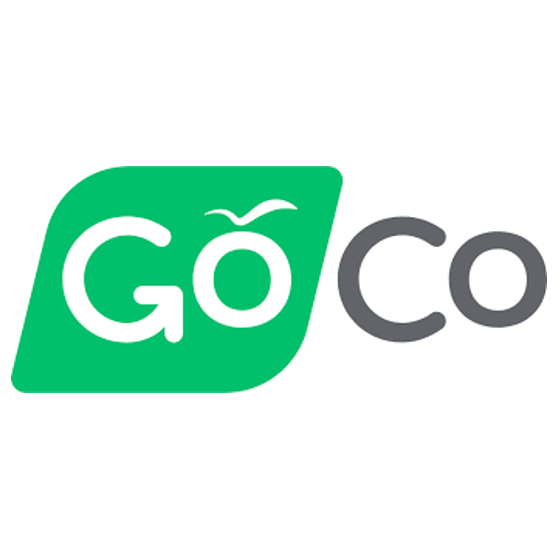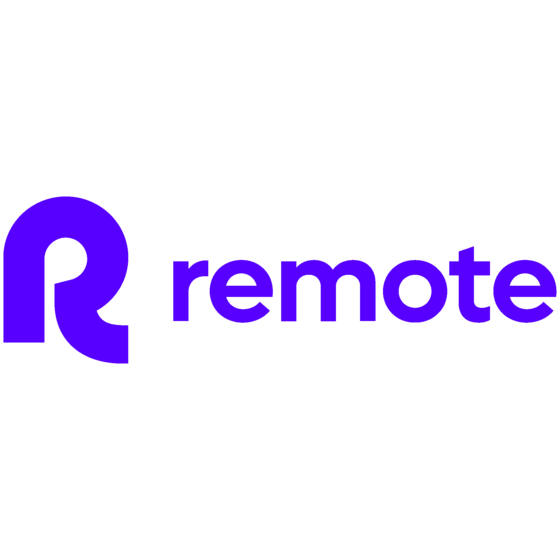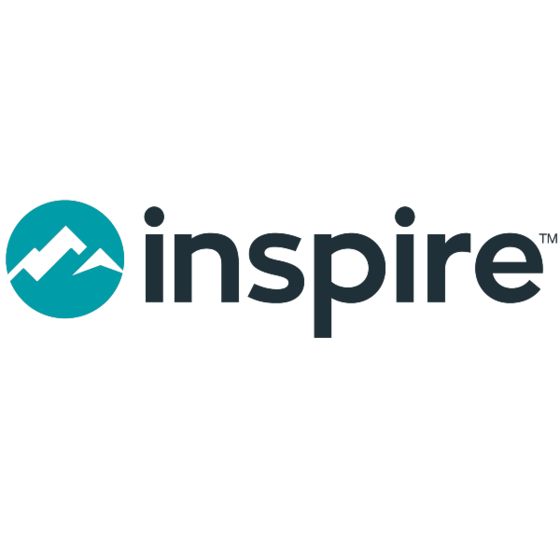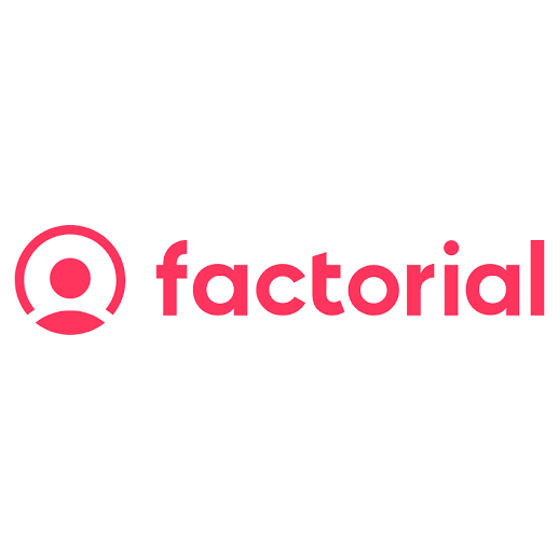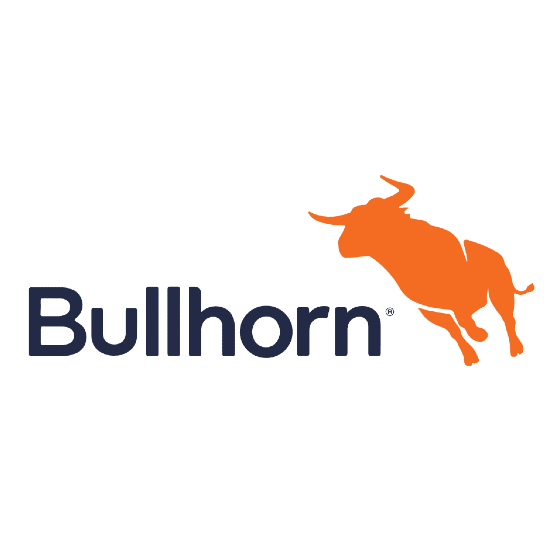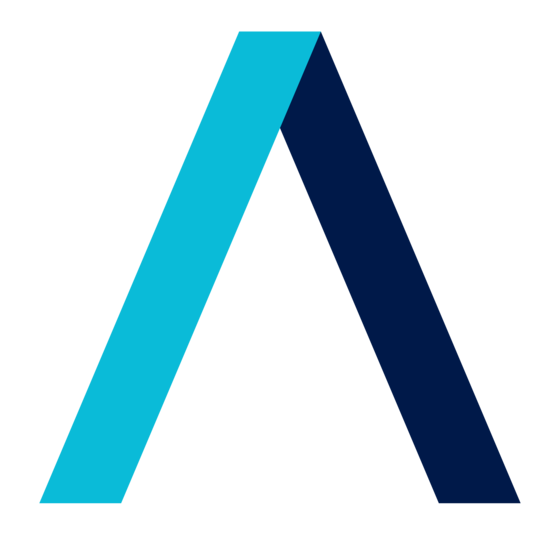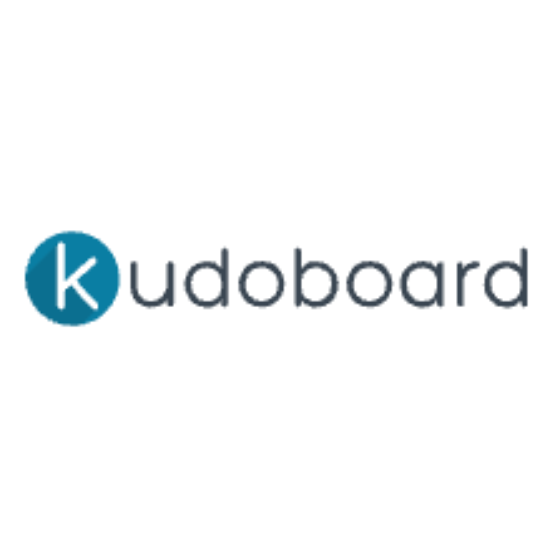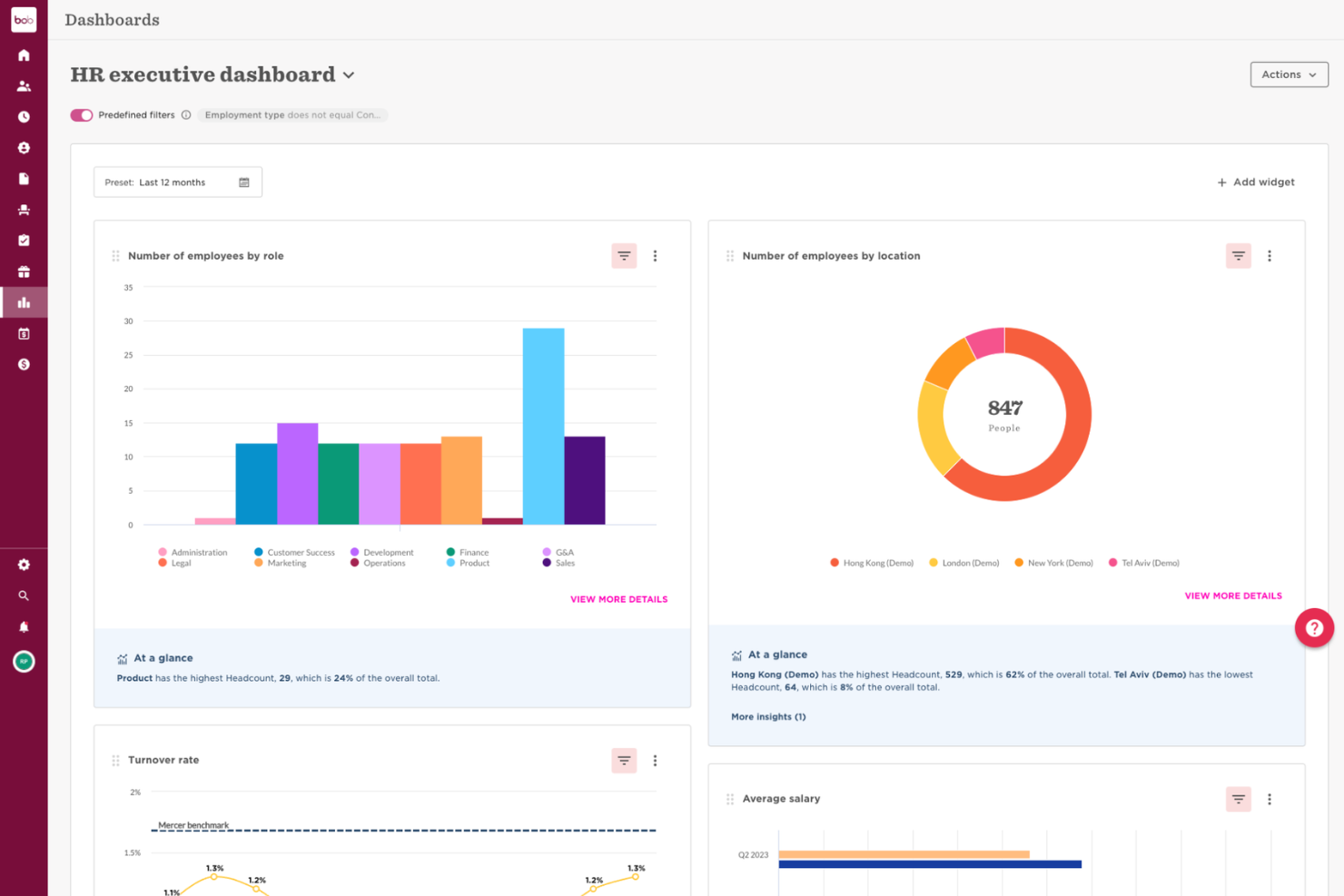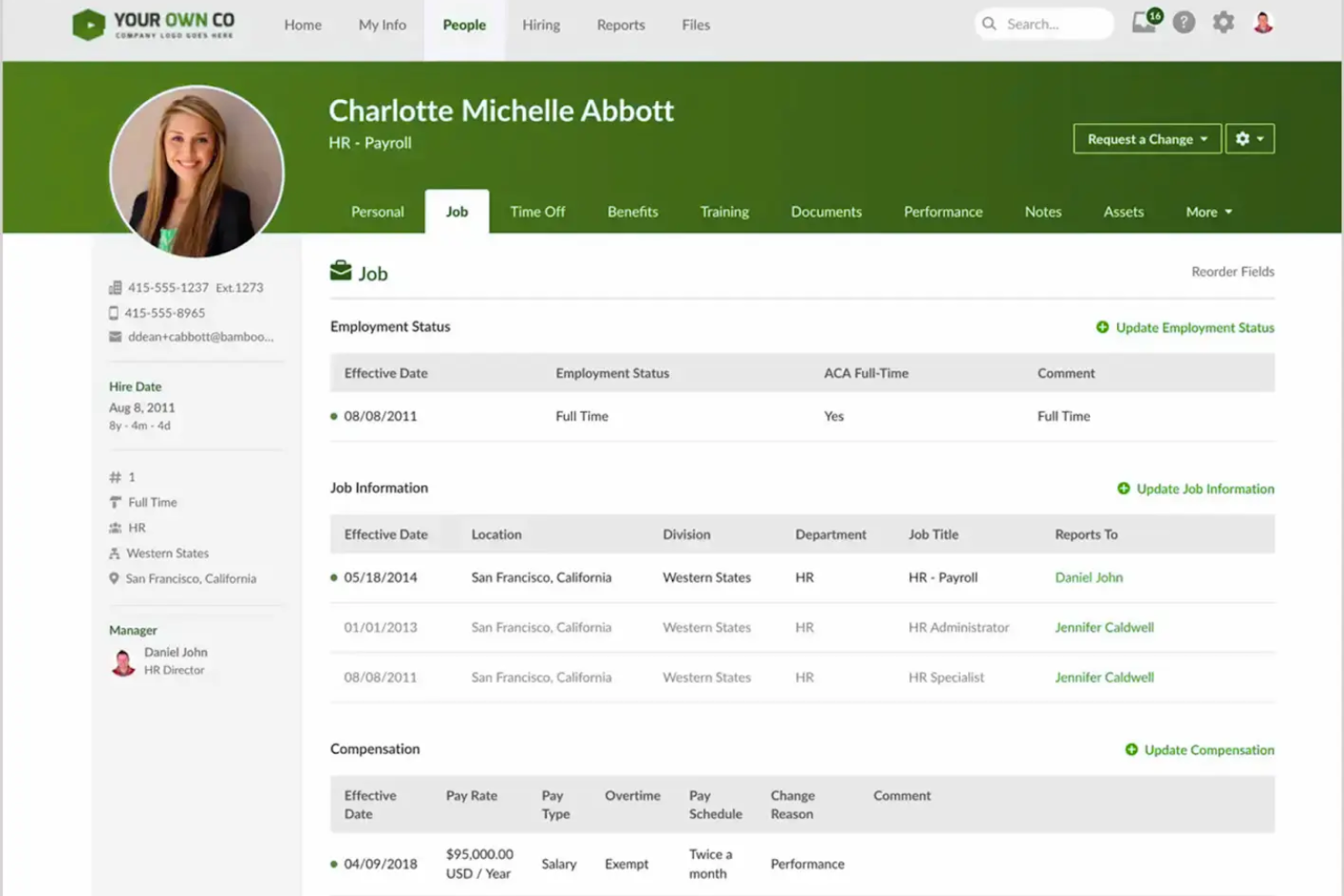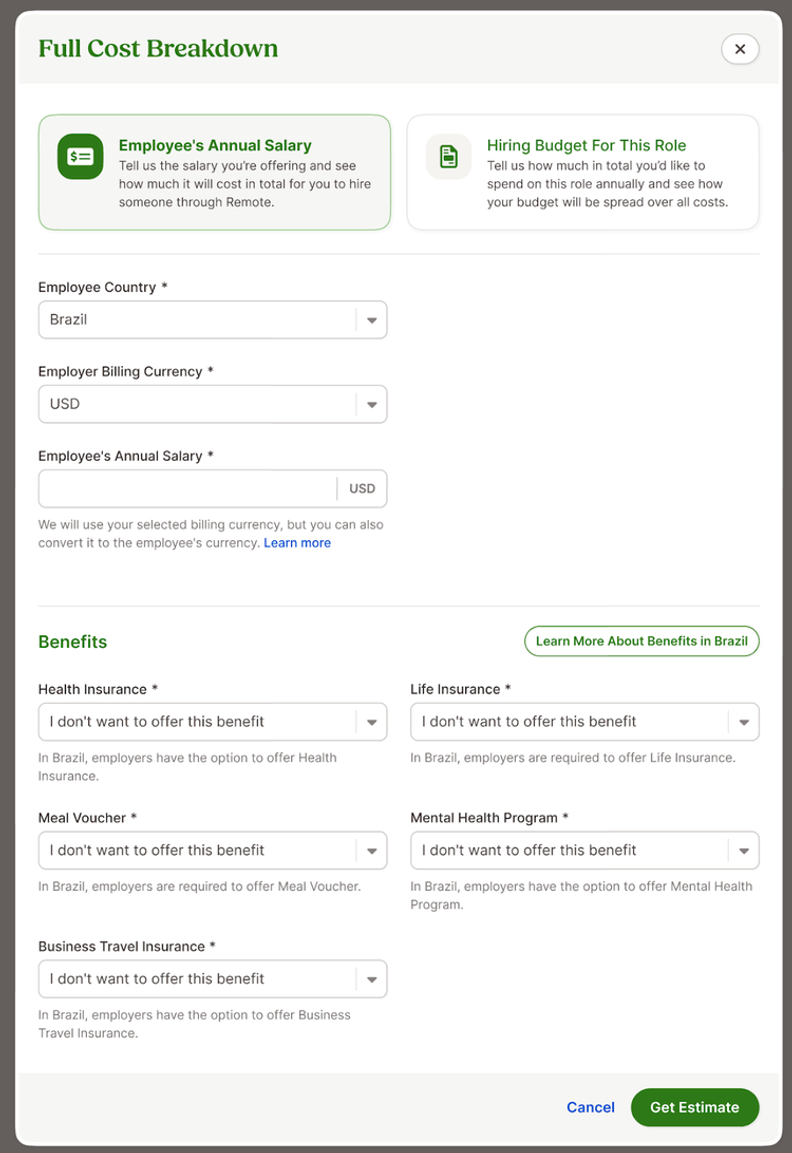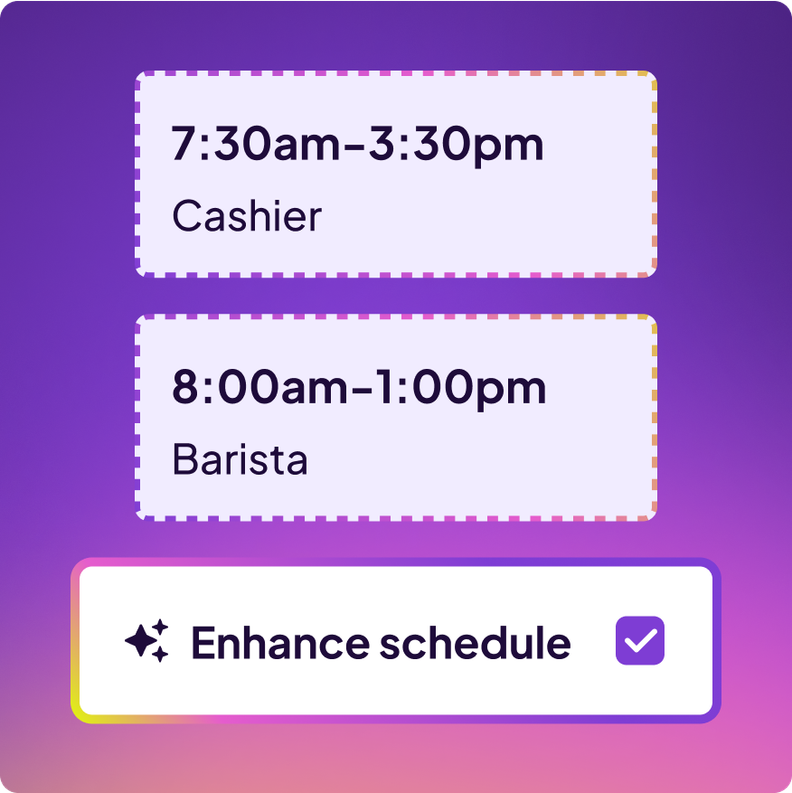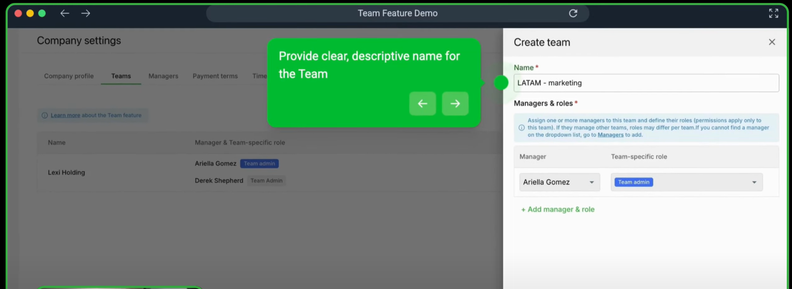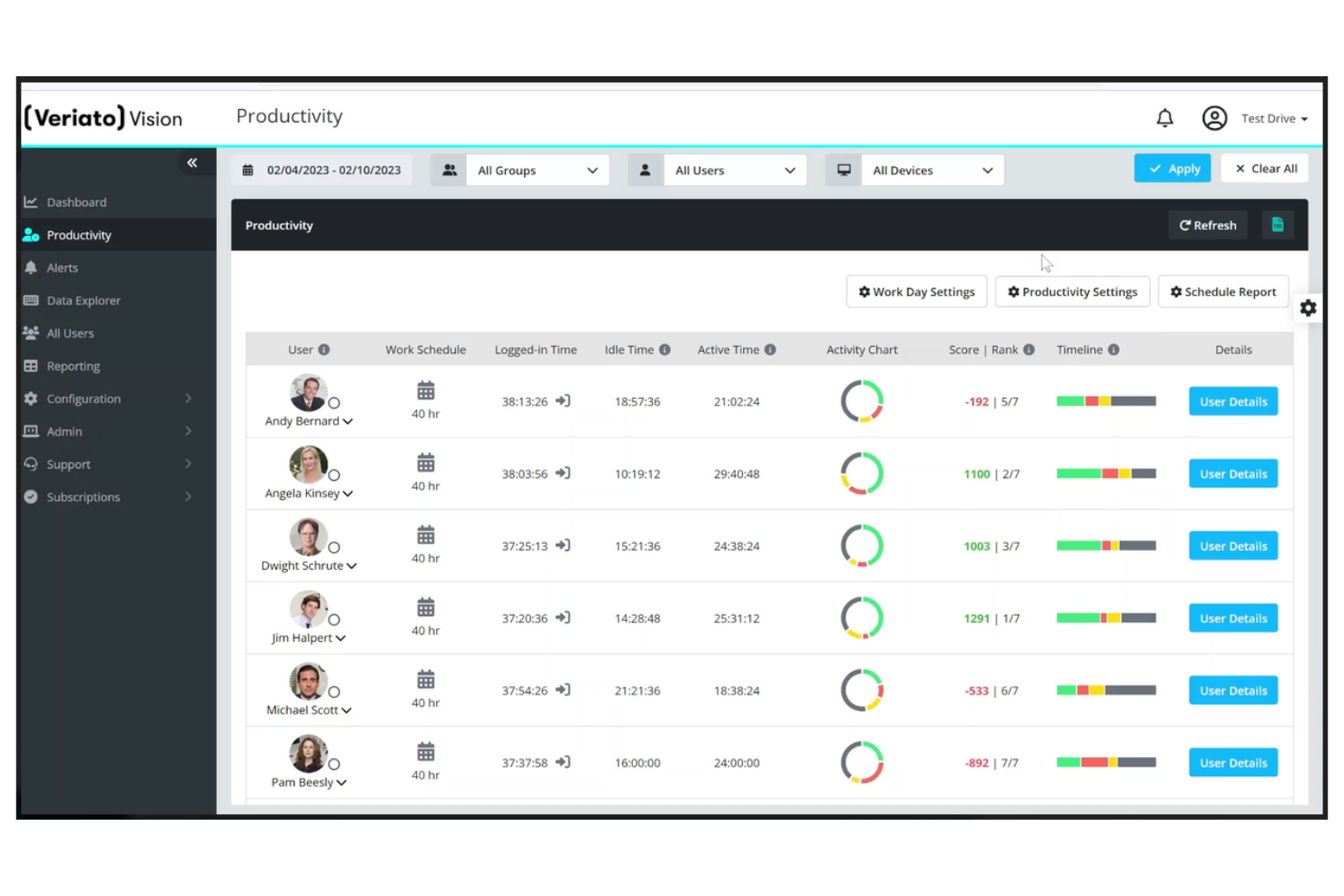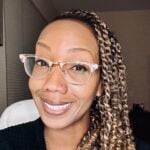20 Best Employee Management Systems Shortlist
Here's my pick of the 20 best software from the 40 tools reviewed.
The best employee management systems bring all your HR processes together—so you can centralize data, automate admin tasks, and give your team a smoother, more connected experience.
When employee information lives in multiple spreadsheets and tools, it creates inefficiencies, errors, and frustration for both HR and staff. The right system streamlines everything from onboarding and attendance tracking to performance reviews and payroll, freeing you from repetitive admin work.
After testing dozens of platforms, I’ve identified the top employee management systems that are intuitive, scalable, and built to simplify your HR operations. In this guide, you’ll find solutions that improve organization, enhance communication, and support your team as your business grows.
Why Trust Our Software Reviews
We've been testing and reviewing HR software since 2019. As HR professionals ourselves, we know how critical and difficult it is to make the right decision when selecting software.
We invest in deep research to help our audience make better software purchasing decisions. We've tested more than 2,000 tools for different HR use cases and written over 1,000 comprehensive software reviews. Learn how we stay transparent, and take a look at our software review methodology.
Best Employee Management Systems: Pricing Comparison Chart
This comparison chart summarizes pricing details for my top employee management software selections to help you find the best software for your budget and business needs.
| Tool | Best For | Trial Info | Price | ||
|---|---|---|---|---|---|
| 1 | Best for HR, payroll, and IT | Free demo available | From $8/user/month (billed annually) | Website | |
| 2 | Best for automated onboarding workflows | Free demo available | Pricing upon request | Website | |
| 3 | Best for onboarding, performance, and payroll | 7-day free trial | From $6.19/user/month (billed annually) | Website | |
| 4 | Best for small brick and mortar businesses | Free plan available | From $20/location/month | Website | |
| 5 | Best for global teams | Free demo available | From $25 - $199/user/month | Website | |
| 6 | Best for managing employees and contractors | Free trial + demo available | From $29/month | Website | |
| 7 | Best for tracking goal progress | Free demo available | Pricing upon request | Website | |
| 8 | Best for improving employee engagement | Free demo available | Pricing upon request | Website | |
| 9 | Best for performance management insights | Free demo available | Pricing upon request | Website | |
| 10 | Best for customizable evaluations | Free trial available | From $2.25/employee/month | Website | |
| 11 | Best for tracking employee productivity | Free demo available | Contact for pricing | Website | |
| 12 | Best for employee self-service | Free demo available | Pricing upon request | Website | |
| 13 | Best for remote teams | Free trial available | From $29/user/month | Website | |
| 14 | Best for training management | Free demo available | Pricing upon request | Website | |
| 15 | Best for performance, recognition, and feedback | Free demo + free trial available | From $10/employee/month | Website | |
| 16 | Best for small businesses | Free demo available | From $8/employee/month + a $49 base fee/month | Website | |
| 17 | Best for payroll processing | Free demo available | From $8/user/month | Website | |
| 18 | Best for tracking HR projects | Free demo available | From $2,500/month | Website | |
| 19 | Best for staffing | Free demo available | Pricing upon request | Website | |
| 20 | Best for recruiting hourly workers | Free demo available | Pricing upon request | Website |
-

Kudoboard
Visit WebsiteThis is an aggregated rating for this tool including ratings from Crozdesk users and ratings from other sites.4.8 -

Rippling
Visit WebsiteThis is an aggregated rating for this tool including ratings from Crozdesk users and ratings from other sites.4.8 -

Paylocity
Visit WebsiteThis is an aggregated rating for this tool including ratings from Crozdesk users and ratings from other sites.4.5
Best Employee Management System Reviews
Here are my detailed summaries of the best employee management systems that made it into my top 10 list, including notes on why I picked them. Each review offers a detailed look at the key features, pros & cons, integrations, and ideal use cases of each system to help you find the best tool for you.
Rippling is an employee management system with modules for HR, payroll, IT functions, and more that allows organizations to streamline their personnel management processes and save time on mundane tasks.
Why I picked Rippling: Their staff management system makes it easy to manage remote employees through an intuitive interface that tracks every aspect of your employees' work from one central location.
They offer an automated onboarding process that includes setting up all employee accounts, such as email and software logins, in one place, eliminating manual tasks. This ensures new employees have access to everything they need immediately. You can also set up automated messages, so new hires receive all the information they need on time.
Their comprehensive offboarding tools simplify the process of terminating employees. Rippling stores all necessary documents for easy access, and helps employers comply with state and federal regulations regarding employment termination.
Rippling Standout Features and Integrations:
Features include payroll software that manages bonuses, deductions, and other adjustments per employee, and custom roles and permissions for individual employees so they can easily access the information they need when they need it without having to navigate around complex menus or search functions.
The platform offers powerful analytics tools so you can easily track performance metrics across your entire team. Managers can access real-time data about their employees to get an accurate picture of their overall performance at any given time.
Integrations include 1Password, Asana, Atlassian, BrightHire, Checkr, DocuSign, Dropbox, GitHub, Google Workspace, LinkedIn, Microsoft 365, Netsuite, Sage Intacct, Slack, Typeform, QuickBooks, Zendesk, Zoom, and many other systems.
Pros and cons
Pros:
- Real-time reporting and unified data
- Integrated payroll and compliance support
- Strong automation / workflow capabilities
Cons:
- Some modules currently lack maturity
- Module add-ons significantly raise total cost
New Product Updates from Rippling
Rippling Now Integrates with Points North
Rippling's new integration with Points North automates certified payroll reporting, ensuring compliance with Davis-Bacon and prevailing-wage laws by synchronizing data in real time and reducing manual errors. More details at Rippling Blog.
HiBob is a modern HR platform designed to simplify people management and enhance the work experience for every employee. It caters to organizations operating onsite, remote, or hybrid work models, aiming to drive engagement, culture, and productivity.
Why I picked HiBob: I like its comprehensive performance management system. It offers 360° performance reviews by integrating employees' career timelines, activities, goals, and achievements into the review process, ensuring fair and unbiased evaluations. This holistic approach allows you to gather feedback from various sources, including self-assessments, managers, and direct reports, fostering a culture of continuous development.
Additionally, HiBob's onboarding workflows automate the onboarding process, ensuring no detail is overlooked and providing new hires with a warm welcome. By facilitating opportunities for new employees to get acquainted with the company, their peers, and the company culture, HiBob helps set the stage for a positive employee experience from day one.
HiBob Standout Features and Integrations
Standout features include time and attendance management that simplifies time tracking, allowing employees to clock in and out easily, even via the mobile app. The compensation management feature enables the handling of global compensation processes, including salary reviews, bonuses, and equity allocation, promoting pay transparency and fairness. Additionally, HiBob's culture and engagement tools give your people a sense of belonging, whether they are working onsite, hybrid, or remote.
Integrations include 15five, 360learning, ADP, Aquera, Ashby, Bonusly, Capdesk, Carta, ClickTime, Cloudpay, Deel, Deputy, Evolia, Finch, Greenhouse, HiThrive, Jobvite, Lano, Google Workspace, Microsoft Teams, and Slack.
Pros and cons
Pros:
- Offers a range of integrations
- Includes features for engagement, recognition, and self-service
- An all-in-one platform that covers a wide range of HR functions
Cons:
- Could offer more configuration options
- Limited built-in payroll outside of specific locations
BambooHR is an all-in-one HR software solution for hiring, onboarding, maintaining employee records, managing engagement and performance, and getting employees paid.
Why I picked BambooHR: I decided to add this platform to my list because of how it combines core HR operations in one centralized system. You can manage your hiring and onboarding activities in the same place where you keep up-to-date employee data and process payroll and benefits administration. Plus, performance evaluations can be conducted through the software and employee engagement surveys can be sent out and monitored.
All of this makes for a well-rounded solution, but also well-rounded data tracking and reporting. You’ll be able to spot trends and connections between engagement and performance levels, and hiring and turnover, too. The software also has communication tools to help keep everyone aligned and updated on the most important information.
BambooHR Standout Features and Integrations
Standout features include the software’s community-oriented communications hub. You can use it to facilitate company-wide announcements, project-related discussions, and even personal interest groups to foster social connections among your staff. The confirmation feature gets a digital sign-off from employees once they’ve read mandatory announcements or messages.
Integrations include Slack, Deel, Lattice, Officevibe, TalentLMS, Bonusly, Lever, Payscale, Papaya Globa, Oyster, and dozens more.
Pros and cons
Pros:
- Mobile app available
- Helpful employee self-service portals
- Lots of integrations available
Cons:
- Some features come as paid add-ons
- Pricing is not transparent
New Product Updates from BambooHR®
BambooHR Launches Global Employment Cost Calculator
BambooHR® has launched a Global Employment Full Cost Breakdown Calculator for users of the Employer of Record integration. This tool helps generate detailed cost estimates for global hires for easier and more accurate planning and budgeting. For more information, visit BambooHR®'s official site.
Homebase is a cloud-based employee management system designed to streamline HR tasks such as time tracking, scheduling, and payroll.
It's one of the best employee management systems that caters to small and medium-sized businesses with hourly employees, like clinics, retail stores, restaurants, and salons. Its user-friendly interface and affordability make it a great choice for small businesses that are looking to streamline their HR tasks without breaking the bank.
Its time-tracking system lets employees clock in and out using their mobile devices, eliminating the need for a traditional punch clock. This feature also allows managers to track their employees' hours in real-time, ensuring that everyone is on schedule and reducing the risk of scheduling conflicts. It has way more than time tracking, though—there's also a set of hiring, onboarding, payroll, and HR compliance features that make this tool a good all-in-one platform.
Integrations include popular payroll providers like ADP, Gusto, and QuickBooks, plus common ecommerce platforms like Shopify and Square. Since a lot of their customer base is in the restaurant industry, there are also a lot of integrations with tools like Restaurant365, tiphaus, and Bevspot.
New Product Updates from Homebase
AI-Optimized Scheduling Assistant Unveiled by Homebase
Homebase introduced an AI-optimized Scheduling Assistant that creates staff schedules using availability, work history, and time-off, resolves conflicts quickly, and allows new hires to onboard and set availability via phone. More details at Homebase Releases.
Remofirst is a comprehensive platform that provides global employment services. It operates as an Employer of Record (EoR) in more than 170 countries, ensuring adherence to local regulations and offering assistance in payroll, benefits management, and equipment provisioning.
Why I picked Remofirst: I selected this platform for its extensive reach and comprehensive services. As an EoR, Remofirst takes on the legal and HR responsibilities for remote employees, allowing companies to focus on their core business. This includes managing payroll, ensuring compliance with local employment laws, and providing benefits.
The tool lets you easily configure new benefits, and access invoices, payroll info, expenses, and time off. Remofirst is designed for remote support and access, providing a range of features to facilitate technical assistance and troubleshooting.
Remofirst Standout Features & Integrations
Features include background checks and local currency management. Background checks allow you to expand your team overseas with confidence, knowing that candidates are being reviewed against local databases. It is a comprehensive coverage that includes criminal, academic, global sanctions, reference, and financial history.
As for currency management, it will let you configure each person's payment in their local currency but allow you to pull reports in your currency of interest only.
Integrations include ADP.
Pros and cons
Pros:
- Compliance issues are handled by local experts around the world
- Fast and responsive customer service
- EOR services available in 150+ countries
Cons:
- No mobile app
- Lacks extensive integrations
New Product Updates from RemoFirst
RemoFirst's Enhancements in Team Management and Notifications
RemoFirst has introduced new enhancements in team management and notification preferences, allowing more customization and efficiency. For more information, visit RemoFirst's official site.
Deel is a global employee management platform that enables hiring in over 150 countries. You can hire full-time employees from anywhere in the world and manage their payroll, compliance, and administration from one single platform.
Why I picked Deel: Deel's platform includes management features for both contractors and employees. For employees, Deel works as the employer of record, handling payroll and benefits, so you don’t need to open up a foreign entity. Their full-featured UI also includes features such as contract management, expense reimbursements, and off-cycle payroll adjustments too.
Deel Standout Features and Integrations:
Compared to other employee management systems, Deel stands out with several new offerings over the past year, including free HR software for businesses, global payroll, global mobility support, integrated Slack tools, and advanced integrations. The global mobility service helps companies with visa sponsorship, allowing them to bring in new employees from abroad. The Slack plugins can be used to create an accessible organizational chart, provide self-service PTO management, and even track applicant referrals.
Deel also complies with SOC2 and ISO 27001 security standards, meaning it follows international guidelines for securing your data.
Integrations are available with major HR and accounting platforms, including Ashby, BambooHR, Expensify, Greenhouse, Hibob, NetSuite, Okta, OneLogin, QuickBooks, Xero, Workday, and Workable. The software’s open API can support additional custom software integrations.
Pros and cons
Pros:
- Managed by 200+ local legal and tax compliance experts
- Simplifies payroll using multiple currencies
- Tailored for international organizations
Cons:
- Overlapping plan features require custom pricing
- No free trial available
Trinet offers HR software and services to help businesses manage various HR functions, including payroll and employee benefits, employee performance and learning, and workplace analytics. The software's features cover the entire employee lifecycle, from hiring and onboarding through to offboarding.
Why I picked Trinet: Their performance management module has cascading goals, performance evaluation templates, and real-time employee feedback. Managers and their team members can track goal progress and connect employee milestones to their performance reviews. Plus, Trinet also gives you access to over 500 courses to help employees learn on the job and train for their roles.
Employee time tracking and scheduling can also be managed through the software. As you manage employee time, you can also manage employee pay and benefits. Payroll and tax filings can be conducted in several countries, making this a good option for global businesses.
Trinet Standout Features and Integrations:
Standout features for Trinet, in addition to those mentioned above, include their workforce analytics capabilities. You can customize their dashboard to track key metrics like your headcount, turnover rates, employee tenure, new hires, and terminations.
Integrations are available with BambooHR, Bob, Carta, ChartHop, Compt, Greenhouse, Lattice, Oracle NetSuite, Sage Intacct, QuickBooks, Xero, and many others.
Pros and cons
Pros:
- Global payroll management for multi-national businesses
- Centralizes all of your HR processes in one platform
- Company provides HR services as well as software
Cons:
- Full functionality may not be needed
- Robust system, comes with a learning curve
Paylocity is an employee management system that integrates HR and payroll functions into one platform. It’s designed to make managing your team easier by automating everyday HR tasks.
Why I picked Paylocity: Paylocity helps you manage your workforce by offering an easy way to handle employee data and documentation. You can store important employee records in a digital, centralized system, ensuring quick access and reducing the need for paper files. Its talent management tools help track employee performance, letting you set goals and monitor progress, while also allowing employees to give and receive feedback.
Another reason Paylocity stands out as an employee management system is its focus on fostering employee engagement. Through its community and peer recognition tools, your team can give shoutouts to each other, which helps build a positive workplace culture.
Paylocity Standout Features and Integrations
Standout features include the scheduling feature that helps managers organize shifts and monitor attendance, ensuring that labor needs are met without overstaffing. The payroll feature automates tax filing and integrates with benefits management, so you don’t need separate systems to handle employee compensation.
Paylocity also has an employee self-service portal for updating information and submitting time-off requests.
Integrations include ClearStar, Microsoft Dynamics 365, 7shifts, AirMason, APA Benefits, Azure, Atlassian, Asana, Box, ClearCompany, Dropbox, Freshdesk, Google Workspace, Greenhouse, HubSpot, Slack, Salesforce, Trakstar, and Zoho People.
Pros and cons
Pros:
- Includes performance management features
- On demand payment options
- Includes tax compliance services
Cons:
- Lacks support for independent contractor payments
- Setup can be time consuming
Sloneek is an employee management system that supports the full employee lifecycle, from recruitment and onboarding to performance evaluation and payroll integration. Its digital tools help you centralize records, automate HR workflows, and monitor workforce engagement in one platform.
Why I Picked Sloneek: I picked Sloneek because of its strong performance management capabilities. You can run 360° feedback, track goals with KPIs and OKRs, and use people analytics to assess team performance. These features can give you a clear view of how individuals and teams are contributing, making it easier to identify growth opportunities. Sloneek also includes time and absence tracking, which means managers can balance productivity while reducing manual admin work.
Sloneek Standout Features and Integrations
Sloneek goes beyond core HR with features like asset management, whistleblowing tools, and organizational charts. The asset management system helps you track company equipment and reduce loss, while the whistleblowing mechanism provides employees with a secure way to raise concerns. For visualization, the organizational chart offers a clear view of reporting structures across your business.
Integrations are available with Google Calendar, Jira, Google Workspace, and Microsoft Active Directory.
Pros and cons
Pros:
- Provides AI-driven employee surveys and analytics
- Includes asset management and whistleblowing tools
- Built-in 360 degree feedback and OKR tracking
Cons:
- Initial setup may require extra time
- Limited customization options for larger enterprises
Express Evaluations is a performance management software designed to facilitate employee evaluations and foster professional growth. It offers tools for creating custom evaluation templates, setting automated review schedules, and generating insightful reports.
Why I picked Express Evaluations: One standout feature is its customizable evaluation templates. You can tailor these templates to fit your organization's specific needs, ensuring that performance reviews are relevant and aligned with your goals. This customization leads to more meaningful evaluations and targeted employee development.
Another valuable aspect is the automated scheduling and reminders. Once you've set up your evaluation timelines, the software automatically notifies employees and managers of upcoming reviews and deadlines.
Express Evaluations Standout Features and Integrations
Standout features include performance improvement plans that help you address and monitor employee development areas effectively. The employee notes function allows managers to document important information throughout the year, providing a comprehensive view during evaluations. Additionally, the software offers manager/employee check-ins.
Integrations include HR-related software like Employee Navigator.
Pros and cons
Pros:
- Customizable evaluation templates
- Supports performance improvement plans
- Comprehensive reporting features
Cons:
- No mobile application for on-the-go access
- Limited integration options with other HR systems
Veriato is an employee monitoring and analysis platform that helps organizations manage their employees' productivity levels. It's well-suited to businesses looking to gain visibility into remote or hybrid workers, however, it is useful for monitoring productivity for in-office employees as well.
Why I picked Veriato: When it comes to employee management, Veriato's features focus on monitoring employee activity to improve productivity and uncover areas for improvement. Their software doesn't include scheduling features, however, you can incorporate scheduling information into their productivity tracker to ensure employees are honoring their work commitments. You can also use Veriato to track attendance easily too.
Veriato Standout Features and Integrations:
Veriato's built-in reporting tools are also very comprehensive. Admin users can generate detailed reports covering employee productivity, internet usage, application usage, active vs. idle time, and other relevant metrics. You can also configure the reports to generate automatically, at a frequency of your choosing (either daily, weekly, or monthly) covering specific individuals, teams, departments, or across your entire organization. All combined, these features can help you gain insights into how your team is working and identify any areas for improvement or process optimization.
Integrations are available with third-party applications by connecting Veriato to a paid Zapier account.
Pros and cons
Pros:
- Fine-grained configuration & filtering to reduce noise
- Broad monitoring coverage: apps, web, email, chat, file use
- Tracks multiple devices per user (up to 8 devices)
Cons:
- More expensive than some competitors, especially enterprise modules
- Licensing tied to device names, not easy to change
- Reporting & filtering features are limited
GoCo is an all-in-one HR software solution designed to simplify HR tasks for small to mid-sized businesses. The platform offers features such as digital onboarding, benefits administration, payroll management, and compliance tracking.
Why I picked GoCo: GoCo offers self-service capabilities for employees, enabling them to manage their benefits, request time off, and access necessary documents without needing constant HR intervention. This not only improves employee satisfaction but also frees up HR professionals to focus on more strategic tasks.
Additionally, the platform offers functionalities such as employee tracking, performance management, automated payroll, and benefits administration, which are designed to improve efficiency and accuracy in managing workforce data.
GoCo Standout Features and Integrations
Standout features include a digital onboarding process that allows new hires to complete their paperwork and training modules online. GoCo also helps businesses stay compliant with labor laws and regulations through automated updates on legal changes, compliance tracking tools, and resources such as training and policy management.
Integrations include Slack, Microsoft Teams, Zapier, QuickBooks Online, Greenhouse, and Gusto.
Pros and cons
Pros:
- Good employee onboarding features
- Centralized employee data management
- Automates HR processes
Cons:
- Mobile app could be more robust
- Lacks extensive customization options
Remote is a global employee management and payroll platform designed to help organizations hire, pay, and support distributed teams anywhere in the world. With built-in compliance, payroll, and HR capabilities, Remote makes it easy for businesses of all sizes to manage both full-time employees and international contractors through one secure, cloud-based system.
Why I picked Remote:
Remote stands out for its global-first approach and expertise in international compliance. The platform enables companies to onboard and manage employees and contractors in over 150 countries, handling everything from localized payroll and benefits to taxation, IP protection, and labor law compliance. I especially value its network of in-country HR and legal experts, who ensure every employment arrangement adheres to local regulations while maintaining cultural awareness and fairness.
Remote’s centralized dashboard gives HR teams and managers access to critical employment data, contracts, and processes, reducing administrative complexity and freeing up time for strategic initiatives. Its seamless experience ensures that compliance, payroll, and benefits run smoothly in the background—helping teams focus on growth while knowing their global workforce is fully supported.
Remote Standout Features & Integrations:
Features include global payroll management, contractor onboarding and payments, localized benefits administration, and automated tax and compliance management. The platform also provides tools for document storage, IP and data protection, and global workforce analytics to keep all HR operations consolidated in one place.
Integrations Remote’s Global Employee API and native integrations connect easily with leading HR, payroll, and productivity systems, enabling partners and organizations to synchronize global employee data and scale operations efficiently. Its robust partner network allows for seamless integration with top HRIS platforms, including BambooHR, Greenhouse, HiBob, and Rippling, as well as other systems via API.
Pros and cons
Pros:
- Supports contractor + employee models
- Handles compliance, taxes, payroll across jurisdictions
- Enables global hiring / expansion without entities
Cons:
- Some features not available in all countries
- Customization / permission granularity limited
eloomi is an employee training and development platform with AI-powered features to support businesses in upskilling their workforce.
Why I chose eloomi: This learning management system (LMS) made it onto my list because of its focus on providing engaging and personalized training programs for staff at various types of companies. Its AI speeds up your training management by assisting with custom content creation, providing learning recommendations, and even translating content.
Users will find a library of pre-built training materials within the platform, allowing for a simple plug-and-play solution. That said, you can also establish customized learning pathways for each and every team member to create individualized progression plans. The software also has a skills intelligence tool that helps you to better understand the skill sets represented across your workforce.
eloomi Standout Features and Integrations:
Standout features of this tool are its quiz generator, which uses course content to create quizzes with AI. This helps test employee retention of important training information, and is a fun way to measure the effectiveness of your training modules. Additionally, a mobile app is available which makes the platform more suitable to various business contexts.
Integrations include Workday, SAP SuccessFactors, Sage, HubSpot, ADP Workforce Now, and Google Workplace, among others.
Pros and cons
Pros:
- Highly customizable to suit various contexts
- Lots of helpful AI features
- Intuitive, user-friendly, and easy to implement
Cons:
- Potential quality issues with translation
- Pricing is not transparent
Inspire is an all-inclusive workforce management software with performance management, OKRs, recognition, learning, and leadership development features. It can be used to manage your entire workforce in one place and to execute your employee engagement and performance strategies.
Why I picked Inspire: The software's OKR tool allows you to set goals at various levels and track progress as teams work towards their objectives. This helps keep everyone on the same page and promotes transparency throughout your business.
Inspire Standout Features and Integrations:
Inspire's standout performance management features include 1-1 meetings, performance reviews, and goal tracking. You can tie employee performance directly to company OKRs, and help them see their impact.
In addition, the software lets you recognize employees for their hard work. You can also collect 360-degree feedback to help inform your performance conversations and provide peer-to-peer recognition.
Integrations are available with Workday, ADP, and other HRIS tools, as well as productivity tools like Slack, Microsoft Office, Google, Jira, or your CRM.
Eddy is an all-in-one HR Suite built for small, local businesses. With Eddy, businesses can hire, onboard, manage, and pay employees with one easy-to-use software.
Founded in 2017 by former professional basketball player turned entrepreneur, Travis Hansen, Eddy has grown rapidly due to its simple but powerful product, highly-rated customer service, and focus on local businesses with deskless workforces.
Why I picked Eddy: A core function of Eddy is people management—users can access company directories and store important employee documents, notes on performance, and training and certifications in employee profiles. You can also create custom PTO policies and approve or deny requests; tap into their time tracking tool, which allows employees to easily clock in and clock out; and navigate payroll processes using Eddy’s full-service payroll system that includes support for multiple pay periods and end-of-year W-2 preparation, filing, and distribution.
Eddy Standout Features and Integrations:
Standout features include job posting management, tracking incoming candidates, and a full-scale applicant tracking system (ATS). Eddy's onboarding system also helps your team stay aligned by assigning internal team tasks to make sure the new hire has a desk, laptop, or other necessary essentials. Their onboarding module also helps HR managers create custom onboarding packages, assign tasks, and easily collect digital signatures. Plus, you can assign specific due dates to paperwork and tasks, and company admins will receive updates regarding the new hire’s progress.
Integrations are available with Glassdoor and Indeed, to help link your recruiting process with your onboarding flows.
Pros and cons
Pros:
- Cost-effective for small / mid businesses
- Clean interface / well organized navigation
- Strong customer support responsiveness
Cons:
- Missing some advanced HR / ATS features
- Limited customization / configurability
Factorial is an all-in-one HR and talent management platform designed to help businesses centralize employee data, automate administrative tasks, and streamline workforce management. It provides comprehensive tools for HR operations, payroll, performance tracking, and analytics, making it an ideal solution for growing organizations seeking to modernize their HR processes in one integrated system.
Why I picked Factorial:
Factorial stands out for its balance of simplicity and depth, offering powerful talent management features in an intuitive interface that’s easy for both HR teams and employees to navigate. The platform covers the entire employee lifecycle—from recruitment and onboarding through performance reviews and offboarding—ensuring every stage of employment is managed seamlessly.
I particularly value its performance management and goal-setting tools, which allow managers to set SMART goals and OKRs, conduct 360-degree reviews, and track development over time. Combined with automated payroll, time tracking, and expense management, Factorial delivers a cohesive experience that helps HR teams focus more on strategy and less on manual administration.
Factorial Standout Features & Integrations:
Features include core HR management, payroll automation, time and attendance tracking, performance management, and employee engagement tools. Managers can set goals, schedule 1:1s, and monitor progress across teams, while employees can log hours, submit time-off requests, and access personal records through a self-service portal.
The platform’s talent management suite supports the full employee journey, including recruitment, onboarding, career development, and offboarding. HR analytics and customizable reports give leaders insight into workforce trends and performance, helping guide data-driven decisions.
Integrations include Sage, Gmail, Slack, Power BI, Indeed, and other workplace tools, with additional connectivity via API and Zapier.
Pros and cons
Pros:
- Good employee self-service features
- Affordable / modular pricing for SMBs
- Intuitive, easy-to-use UI
Cons:
- International payroll not fully mature
- Missing advanced features for large orgs
Kissflow is a flexible work and HR management platform designed to streamline processes across project management, HR operations, and performance tracking. It provides businesses with a unified workspace that supports applicant tracking, onboarding, performance reviews, leave management, and time tracking, making it a versatile solution for organizations seeking to automate workflows and centralize HR data.
Why I picked Kissflow:
Kissflow stands out for its powerful workflow automation and broad integration capabilities. Unlike many HR-only tools, Kissflow combines project management and HR process automation in one system—allowing organizations to manage everything from hiring and onboarding to task assignments and performance tracking within a single platform.
I particularly value Kissflow’s customizable workflow engine, which lets HR teams build and automate unique processes like employee onboarding or performance reviews without requiring coding expertise.
Its intuitive interface makes it easy to track leave requests, monitor attendance, and view employee activity streams in real time. The platform’s strong integration ecosystem further enhances productivity by connecting HR data with finance, CRM, and collaboration systems.
Kissflow Standout Features & Integrations:
Features include applicant tracking, onboarding and performance management, time and attendance tracking, leave request management, and task activity streams. HR and project teams can collaborate within shared workflows, ensuring alignment and visibility across all stages of the employee lifecycle.
Kissflow also includes workflow automation tools that simplify approval processes and routine HR operations. Its dashboards and reporting tools offer insights into performance, engagement, and productivity metrics, helping leaders make informed, data-backed decisions.
Integrations are a major strength, with connections to QuickBooks, Google Workspace, Dropbox, DocuSign, WebMerge, SAP, Oracle, Salesforce, and many others via API and custom connectors.
Pros and cons
Pros:
- Responsive support & performance praised
- Real-time tracking & analytics features
- Flexible / customizable workflow design
Cons:
- Permissions / admin control limitations
- Cost high for small businesses
Bullhorn is a leading recruitment and staffing software platform designed specifically for staffing agencies and recruiting firms. It provides a comprehensive suite of tools that streamline every stage of the recruitment and employment lifecycle—from sourcing candidates and managing relationships to handling onboarding, compliance, and back-office operations.
Why I picked Bullhorn:
Bullhorn stands out for its deep specialization in staffing and recruitment management. The platform combines applicant tracking, CRM, onboarding, and middle- and back-office automation in one integrated solution.
A major strength of Bullhorn is its robust integration ecosystem, especially with vendor management systems (VMS) and applicant tracking systems (ATS). The platform supports seamless connections with over 40 third-party tools, including Fieldglass, Beeline, and IQ Navigator, making it an excellent choice for agencies that rely on multi-channel recruitment workflows.
Bullhorn Standout Features & Integrations:
Features include recruiting and applicant tracking, onboarding software, client and candidate relationship management, and middle- and back-office automation for handling payroll, invoicing, and compliance. The Pulse relationship intelligence tool provides real-time insights into candidate and client engagement, helping recruiters prioritize communication and improve relationship quality.
Bullhorn’s workflow automation tools allow users to streamline repetitive administrative tasks and improve recruiting speed. The platform’s analytics dashboards provide visibility into placement metrics, pipeline health, and recruiter productivity.
Integrations include VMS and ATS systems such as Fieldglass, Beeline, and IQ Navigator, along with CRM, payroll, and productivity tools. Additional connections are available through Bullhorn Marketplace, which offers integrations with more than 100 partner applications.
Pros and cons
Pros:
- Good automation / workflow tools
- Strong integrations / open API
- Intuitive, user-friendly interface
Cons:
- Limited / rigid customization in some areas
- Steep learning curve for advanced features
TalentReef is a talent recruitment and management system that covers candidate sourcing, hiring, and onboarding, as well as monitoring employee engagement on an ongoing basis.
Why I picked TalentReef: This platform has everything you need to recruit and hire hourly workers. You can post jobs, parse through resumes, and schedule interviews through the system. Plus, you can set up automated onboarding workflows to get new hires up and running quickly.
But the main reason I included this software on my list is for its retention tools for your existing staff. Once you've hired a highly skilled team, you can keep them engaged with the goal setting, feedback exchange, and recognition tools. You can also set up training and learning modules with the platform, and provide an employee self-serve portal for assessments, evaluations, and more.
TalentReef Standout Features and Integrations:
Some of the standout features in this platform are its performance management tools. You can conduct check-ins, set and track goals with employees, and conduct performance evaluations. This includes self-evaluations, so employees have a chance to highlight their hard work.
Integrations include payroll systems, candidate assessment tools, background check providers, and learning management systems, though individual platforms are not specified.
Pros and cons
Pros:
- Specifically designed for the needs of hourly workers
- Customizable workflows and templates
- Recruitment, onboarding, and talent management in one place
Cons:
- May not be suited to salaried workers
- Pricing is not transparent
Other Employee Management Systems
Here are a few more options that didn’t make the best employee management software list. If you need additional suggestions for helpful HR systems, check these out:
- SAP SuccessFactors
For enterprise organizations
- Insperity
For growing businesses
- SyncHR
For organizing employee data
- Leapsome
For employee development
- Lattice
For performance-related feedback
- monday.com
Employee productivity tool
- Buddy Punch
For field-based teams
- Justworks
For benefits administration
- Peoplebox.ai
For performance management
- Workleap
For goal setting and employee engagement
- Mitratech Perform
For continuous feedback
- Connecteam
All-in-one app for mobile teams
- Paycor
For flexible payment options
- edays
For global absence & leave tracking
- TimeTrex
For time and attendance tracking
- Workday
For business & professional services companies
- 15Five
For linking employee performance with OKR management and employee engagement
- Namely
People operations platform for engagement, onboarding, payroll, and analytics
- Gusto
Payroll service for international contractor-based teams
- Hubstaff
For employee monitoring including app/URL activity and keyboard & mouse usage
Related HR Software Reviews
If you still haven't found what you're looking for here, check out these other related tools that we've tested and evaluated:
- HR Software
- Payroll Software
- Recruiting Software
- Employer of Record Services
- Applicant Tracking Systems
- Workforce Management Software
Selection Criteria for Employee Management Systems
Selecting the right employee management systems hinges on understanding how each functionality aligns with common use cases and organizational needs.
Having personally navigated the landscape of these tools, my approach to choosing the best employee management systems is grounded in thorough research into recent market data on employee management software and how these tools optimize key HR processes while addressing common buyer needs and pain points.
Here are the details I evaluated to decide on my final picks:
Core Employee Management System Functionalities (25% of total score): To be considered for inclusion in my list of the best employee management systems, the solution had to offer the following basic functionalities first:
- A centralized repository for all your core employee data
- Integrated modules for easy digital data management (i.e., no need to enter the same information twice)
- Employee self-service capabilities to cut down on administrative requests
- Customizable user roles and permissions to limit who has access to your data
- Strategic HR insights through integrated analytics & reporting
- Integration capabilities with other key HR software solutions (including applicant tracking systems, project management software, and other tools your HR team relies on) for seamless data flow and increased operational efficiency
In addition to these core features, it's also important to note that there are different styles of employee management platforms out there. Some are focused more on day-to-day activities such as scheduling and task management, while others have a heavier focus on employee development and performance.
Additional Standout Features (25% of total score): To help me uncover the best employee management systems on the market, I also kept a keen eye out for any unique features, including:
- Advanced AI-driven analytics including predictive insights
- Customizable workflow automation tools to reduce manual HR tasks
- Unique employee engagement tools, such as gamification, pulse check-ins, or wellness tracking
- Platforms offering exceptional mobile experiences for on-the-go HR management
Usability (10% of total score): To evaluate the usability of each employee management system, I considered the following:
- An intuitive user interface design that simplifies complex processes
- A good balance between powerful features and ease of use to accommodate all skill levels and create a positive user experience
- User-friendly design elements like drag-and-drop calendars for scheduling and in-app communication tools
- Role-based access controls that are straightforward to configure
Onboarding (10% of total score): To get a sense of each software provider's customer onboarding process, I considered the following factors:
- Quick setup processes and clear guidance for first-time users
- Customizable templates and reports to speed up the onboarding process
- Comprehensive training materials such as videos or interactive tutorials
- Support for migrating data from previous systems into the new platform
Customer Support (10% of total score): To evaluate the level of customer support each vendor offered, I considered the following:
- The availability of multiple support channels, including email, phone, and chat
- The existence of a self-service knowledge base, FAQ repository, or other self-help resources to speed up troubleshooting
- The overall quality, responsiveness, and helpfulness of the support team during customer onboarding and post-purchase, as inferred from customer reviews
Value for Price (10% of total score): To gauge the value of each software, I considered the following factors:
- The availability of free trials or demos to test the software before purchasing
- Transparent pricing models that clearly explain which features are included at each level, with no hidden fees
- Tiered pricing plans that cater to different business sizes, from small to medium-sized businesses (SMBs) up to enterprise-level organizations
Customer Reviews (10% of total score): Evaluating customer reviews is the final element of my selection process, which helps me understand how well a product performs in the hands of real users. Here are the factors I considered:
- Whether a product has consistently high ratings across multiple review platforms, indicating a broad level of user satisfaction
- Specific praises, criticisms, or trends in customer feedback that indicate the software's strengths or areas for improvement
- Whether customer feedback specifically mentions issues with ease of use, customer support responsiveness, or lacking features
- Testimonials that highlight beneficial use cases, including mobile app functionality and customization options
Using this assessment framework helped me uncover the employee management systems that go beyond basic requirements to offer additional value through unique features, intuitive usability, smooth onboarding, effective support, and overall value for price.
How to Choose an Employee Management System
Employee management systems can solve many different challenges and improve numerous workflows. To help you figure out which employee management system best fits your needs, you need to pinpoint your key users and document their specific challenges first.
As you work through your own unique employee management software selection process, keep the following points in mind:
- What employee management problems are you trying to solve? Start by identifying the challenges you're trying to overcome. This will help you clarify the features and functionality the employee management software needs to provide. Common employee management challenges include:
- Difficulty staying on top of employee data management and record keeping,
- Inefficient employee scheduling and time-tracking processes,
- Payroll and benefits administration processes that are siloed in other systems without integration,
- Cumbersome employee performance processes that are inconsistent, or
- Poor employee onboarding experiences, especially for remote new hires.
- What outcomes are important and how will you measure success? Being clear on your desired outcomes upfront is crucial to avoid wasting valuable time. Key outcomes you may want to focus on include:
- Integrated modules for HR functions that reduce or eliminate manual data entry,
- Automated employee scheduling capabilities resulting in less scheduling conflicts or absenteeism,
- Enabling a better employee experience for your staff by allowing them to trade shifts, or access self-service features, or
- Improved productivity for your HR team as a result of new workflow automation features and AI-backed HR processes.
- Who are your main users? Consider who will use the software and how many licenses you'll need. You'll need to evaluate if it'll just be your HR professionals and managers, or your whole organization that will require access. Once that's clear, it's also useful to rank the needs of your different users to identify the key priorities for your power users, managers, and employees, to ensure they're all met.
- What is your budget? To evaluate cost, do a headcount of your existing workforce, plus your projections for the next 5 to 10 years. Since most staff management tools charge a monthly fee per employee, this will help you estimate your monthly costs proactively.
- Do you require specific software integrations? Clarify whether your new employee management system will replace existing tools, or need to integrate with them. Depending on the type of employee software you're looking for, some key integrations to watch for include payroll software, or attendance and time-tracking tools.
- Does the new software satisfy your technical requirements? Consider the software selection alongside your existing workflows and systems. Does the new employee management system offer the security features you want (e.g., two-factor authentication (2FA), etc.)? Does the software offer a complimentary employee management app for connecting via mobile devices?
Remember, every business is different — don’t assume that an employee management system will work for your organization just because it's popular.
Trends in Employee Management Systems for 2025
Employee management systems have continued to evolve to incorporate advances in technology as well as changing workplace dynamics. Here are the most recent trends that are shaping the future of employee management systems today:
- AI-Powered Predictive Analytics: Many systems now offer AI-driven insights to help HR teams forecast staffing needs, flag potential employee churn, and identify areas for improvement. This proactive approach transforms HR from reactive task management to strategic workforce planning.
- Personalized Employee Experiences: Systems are shifting toward hyper-personalization—custom learning paths, benefits recommendations, and wellness resources tailored to each employee’s role, goals, and preferences. This trend supports higher engagement and retention.
- Mobile Accessibility: The importance of mobile access to employee management systems continues to grow. Updates are increasingly focused on enhancing the mobile user experience, ensuring that employees and managers can access the system and perform tasks from anywhere, at any time.
- Automation: Automation is a current trend in employee management software because it streamlines repetitive tasks, boosts efficiency, and reduces human error. Improving HRIS toolset capabilities allows companies to automate tedious tasks like employee scheduling and attendance monitoring.
- Integrated Communication Tools: Newer systems are embedding chat and feedback tools directly into platforms—making it easier for managers and employees to communicate, complete performance check-ins, or request support without leaving the app.
- Data Privacy & Compliance Features: As data protection regulations tighten globally, employee management platforms are doubling down on compliance tools. Features like automated policy updates, role-based permissions, and audit trails are becoming standard to help businesses stay secure and compliant.
These developments in employee management software signal a clear trend toward more integrated, intelligent, and user-friendly solutions designed to optimize daily HR operations, uncover actionable insights, and provide a better employee experience.
What is an Employee Management System?
An employee management system is software that helps companies organize employee data and manage core HR functions in one place.
It typically includes tools for recruiting, onboarding, time tracking, performance management, training, payroll, and benefits. These systems give HR teams and employees a single source of truth for all workforce information.
Employee management systems improve efficiency, reduce manual work, and support company growth by providing scalable tools for scheduling, task management, and workforce segmentation.
Common Employee Management Challenges
Traditional methods of managing employees often lack the efficiency, accuracy, and engagement necessary for today’s dynamic workplaces. Having navigated the complexities of employee management, I’ve encountered many of these recurring issues firsthand.
Below are some of the most common limitations of traditional employee management methods, each of which can be resolved by implementing a new employee management system:
- Time-Consuming Administrative Tasks: Traditional approaches often rely on manual processes for tracking attendance, performance, and scheduling, consuming significant time for HR teams and managers. Employee management software automates these tasks, allowing HR to focus on strategic priorities rather than manual tracking.
- Inconsistent Performance Tracking: Without a standardized system, performance evaluations can vary widely, leading to inconsistent and subjective feedback. Employee management systems centralize performance data, enabling fair and consistent evaluations that help employees understand and meet expectations.
- Limited Engagement Opportunities: Relying on in-person meetings and sporadic check-ins can make it difficult to maintain engagement, especially with distributed teams. Employee management systems offer tools like pulse surveys and real-time feedback, helping managers gauge engagement and address issues proactively.
- Poor Visibility and Accountability: Traditional methods often lack transparency, making it difficult to track task completion, monitor progress, or hold employees accountable. With centralized dashboards and real-time tracking, employee management software gives managers a clear view of team progress, enabling better accountability and oversight.
- Challenges in Managing Remote Teams: Traditional approaches typically don’t provide remote employees with the tools they need to feel included and connected. Modern systems facilitate virtual communication, file sharing, and task management, allowing remote employees to collaborate and contribute effectively.
- Prone to Errors and Compliance Risks: Manual data entry and paperwork increase the risk of errors, which can lead to compliance issues with labor regulations. Employee management systems help mitigate these risks by securely storing data, automating compliance tracking, and providing updates on regulatory changes.
- Limited Flexibility for Personalized Development: Traditional methods often lack the tools needed to tailor development plans based on individual skills, roles, and career goals. Employee management systems allow managers to create customized development plans, aligning individual growth with company goals.
- Difficulty in Analyzing Workforce Data: Compiling and analyzing data from multiple sources is time-consuming and limits data-driven decision-making.
Employee management systems consolidate data into dashboards, enabling HR and leadership to identify trends, make informed decisions, and optimize resources. - Slow Response to Employee Feedback: Traditional feedback methods are often infrequent and delayed, making it hard to address employee concerns in real-time. Modern systems provide tools for continuous feedback, allowing HR and managers to respond to employee needs and improve the workplace experience promptly.
- Inefficient Resource Allocation: Without a streamlined system, HR and management resources are often spread thin, handling routine administrative tasks that detract from strategic work. Employee management software reduces administrative burdens, freeing up resources that can be allocated to high-impact initiatives.
As you can see, these common frustrations illustrate how an advanced employee management system can improve efficiency, engagement, and consistency, supporting a more productive and empowered workforce.
Features of Employee Management Systems
In addition to the core functionalities above, here are some additional features I also paid close attention to when evaluating the best employee management systems for this list:
- Payroll Processing: From the employee perspective, ensuring your payroll is properly processed is always a top concern. Most employee management platforms do offer payroll abilities, or at the very least, integrations or add-ons to cut down on manual payroll-related processes.
- Time & Attendance Tracking: Tracking your employees' whereabouts is a key pillar of employee management, which is why integrated time tracking and leave management features are important. You want to be able to manage vacation and other time off requests within the same tool you're creating your work schedules in, to avoid scheduling conflicts or duplicating work.
- Benefits Administration: Many employee and HR management systems offer benefit management tools that simplify the enrollment process for employees, improving satisfaction and retention.
- Performance Management: Ensuring employees reach their full potential is also a crucial aspect of employee management. You'll want the ability to conduct employee performance reviews, set goals (some have structured goal setting with OKRs), track goal progress, and collect continuous feedback. Other common features are employee self-assessments and 360-degree feedback.
- Learning & Development: This feature covers any tools that help internal talent development teams deliver targeted training programs, fostering a culture of continuous improvement and supporting skill-building and employee growth.
- Employee Engagement Features: This covers features designed to encourage employees to interact more with each other. It might also come in the form of tools to monitor employee satisfaction, sentiments, and well-being.
- Automation Capabilities: Some systems provide smart workflows to automate various repetitive or tedious manual HR processes. This could cover things like running payroll and employee benefits administration, processing time off approvals, or ensuring employee onboarding checklists are completed.
- Reporting & Analytics: Systems that gather and report on HR metrics in real-time allow you to make better data-driven decisions across all areas of your organization. Other helpful features include different ways to visualize your data, as well as the ability to export your employee data in various formats.
- Compliance Management: This feature ensures that all HR practices adhere to current labor laws and regulations, protecting the company from potential fines and legal challenges, and minimizing risks.
- Mobile Accessibility: Providing the option for your employees to access their information via a mobile-friendly self-service portal enhances the flexibility and accessibility of managing a dynamic and mobile workforce.
Selecting employee management software with these features is essential for modern businesses aiming to optimize their HR operations. By focusing on these features, companies can effectively manage their most valuable asset—their people—and pave the way for continued success and growth.
Benefits of Employee Management Systems
Employee management systems are powerful workforce management tools that act as a single source of truth for organizing key HR functions, including recruitment & onboarding, time and attendance tracking, performance management, training & development, payroll, and benefits administration.
By selecting the best employee management software for your needs, you can expect to gain the following benefits:
- Increased Efficiency: By automating routine tasks such as time tracking, payroll, and employee data management, employee management systems significantly reduce the time and effort required to manage these processes. This frees up HR professionals to focus on more strategic tasks, thereby increasing the overall efficiency of the HR department.
- Improved Employee Experience: By empowering employees through self-service portals and enhancing their user experience through personalization and mobile-friendly features, employee management systems improve the overall employee experience, leading to greater job satisfaction.
- Enhanced Data Accuracy and Security: Employee management platforms improve data accuracy by minimizing the errors associated with manual data entry. Additionally, they offer advanced security features to as encryption and two-factor authentication to protect sensitive employee information, ensure compliance with data protection regulations, and prevent data breaches.
- Streamlined Communication and Collaboration: By centralizing employee information and providing tools for feedback collection and two-way communication, employee management systems facilitate better communication between managers and employees and foster a more collaborative work environment.
- Data-Driven Decision Making: With comprehensive analytics and reporting tools, employee management systems offer insights into important HR metrics like turnover rates, employee engagement, and productivity levels. These insights enable HR professionals and business leaders to make informed decisions that can positively impact the organization's growth and performance.
As you can see, employee management systems offer operational benefits to organizations of all sizes, including improved efficiency, a better employee experience, and data-backed insights to drive operational success.
Costs & Pricing for Employee Management Systems
Often, the decision to invest in a new software system comes down to the final price, and there's no shame in that. It's important to find an employee management system that works within your budget, but also meets your business needs.
Employee management systems offer different plans and pricing options that cater to different organizational needs and sizes. Many also offer free trials or free plans with limited features (i.e., freemium plans), allowing you to get your hands on the software before you commit to a contract.
Plan Comparison Table for Employee Management Systems
| Plan Type | Average Price | Common Features Included |
|---|---|---|
| Free | $0 | Basic employee tracking, limited reporting, and access for a small number of users |
| Basic | $2 - $8 per user/month | Employee self-service, time and attendance, basic HR reporting, and email support |
| Professional | $8 - $15 per user/month | Full HR suite (including recruitment and onboarding), advanced analytics, integrations with other software, and phone support |
| Enterprise | Custom Pricing | Customizable features, dedicated support, advanced security options, API access, and scalability options |
Choosing the right plan involves balancing your organization's specific needs with your budget considerations. Always consider the scalability of the system and the quality of customer support when making your decision.
While it's understandable that you may want to start with a free or basic plan initially, there are several reasons why you may want to opt for a more advanced plan, including:
- Growth in Employee Numbers: Many basic plans limit the number of admin users and employee accounts you can have. However, more advanced plans can accommodate larger volumes of users and offer better tools for managing an increased amount of employee data and administrative tasks.
- Advanced Reporting Needs: If you need more detailed insights and analytics to make informed decisions, you'll need to scale up your plan to unlock these advanced HR reporting software features. However, it's worth paying a little extra to gain tools to help you track performance, identify trends, and improve the overall efficiency of your workforce.
- Integration with Other Systems: Integration abilities are usually quite limited or nonexistent in free or basic plans. However, integrating your employee management data with other business systems, including your payroll, CRM, or ERP, is worth investing in, since doing so will improve your data synchronization across systems, reducing manual data entry and the possibility of errors.
- Customization and Flexibility: If your unique business needs require more customization options, you'll likely need to increase your plan to access those features. By upgrading to a higher-priced plan, you'll gain the ability to tailor your workflows to align with your company's processes.
- Advanced Support and Training: If you find you need more than just basic troubleshooting, an advanced plan may be a better fit. Advanced plans typically offer superior customer support and training resources, helping you maximize the software's potential and get up-to-speed in the system quickly.
Ultimately, it's important to secure a plan that offers the features you require to satisfy your current needs and solve your challenges without exceeding your budget.
Employee Management Systems: FAQs
Have some questions about employee management systems and what they have to offer? These frequently asked questions are a great place to start:
How can software support HR teams with typical employee management challenges?
Employee management systems directly address the operational bottlenecks that prevent HR from delivering strategic value. HR professionals spend 40% to 60% of their time on compliance and administrative tasks, and HR departments see a 60% reduction in time spent on administrative tasks after implementing AI. This time savings allows CHROs to redirect resources toward talent strategy and organizational development.
The most impactful areas where software delivers immediate results include automated onboarding workflows, integrated performance management that provides real-time visibility into team effectiveness, and centralized employee data that eliminates manual spreadsheet maintenance. HR professionals may free up 14 hours per week by delegating time-consuming tasks to AI algorithms, while automated onboarding reduces errors in employee data collection by 73%. Automating the onboarding process can produce up to a 65% increase in new hire productivity and a 77% decrease in turnover within the first three months.
When selecting an employee management system, focus on solutions that integrate with your existing HR tech stack, particularly your HRIS and payroll systems. Look for platforms that offer role-based dashboards so managers can access employee information without HR involvement, and ensure the system provides analytics capabilities to demonstrate ROI to executive leadership. The right platform should measurably reduce HR’s administrative burden while improving employee experience metrics like engagement scores and retention rates.
What are the most common challenges of managing remote, hybrid, or other diverse team structures?
Managing diverse, hybrid or remote teams brings specific challenges. Remote work can make communication harder, tracking performance more difficult, and leave employees feeling disconnected. Without the right tools, remote workers may feel isolated, affecting their productivity and morale. Managing different time zones and ensuring fair workload distribution can also add complexity.
Diverse teams offer benefits but require careful management. Different cultures, communication styles, and work habits can lead to miscommunication if not handled well. Employee management tools that improve communication and collaboration help ensure diverse teams can work together effectively, no matter where they are based. These tools also promote fairness and inclusivity, giving everyone the support they need
How do these systems handle data privacy and security?
Employee management systems prioritize data privacy and security by employing various strategies, including:
- Data encryption
- Secure access controls
- Regular security audits
- Compliance with global data protection regulations (e.g., GDPR).
It’s important to select a system that transparently outlines its security measures and has a proven track record of safeguarding user data, giving you peace of mind when it comes to compliance.
Are there any hidden costs associated with these systems?
While employee management systems advertise their core features, potential hidden costs can include fees for additional users, advanced features, customizations, integrations, and sometimes even for data export or technical support. Always inquire about the total cost of ownership before committing to a system.
If cost is your biggest concern, this article delves deeper into different HR software pricing models you may encounter.
How have employee management systems adapted to accommodate hybrid working environments?
Today’s employee management systems have fundamentally transformed to meet the demands of hybrid work, with 28.2% of full-time employees now working a hybrid model. The most critical adaptation has been the integration of sophisticated workspace management capabilities that coordinate both physical and virtual work environments.
Modern platforms now feature intelligent desk booking systems that allow employees to reserve workstations through interactive floor maps, with only 40% of companies maintaining a 1:1 employee-to-desk ratio, down from 56% last year. These systems include capacity enforcement tools that automatically block bookings when safety limits are reached and provide real-time visibility into which team members will be in-office on specific days, enabling better coordination and collaboration planning.
The technology stack has expanded beyond basic scheduling to include robust analytics dashboards that give CHROs data-driven insights into space utilization patterns and employee preferences. 93% of employers and 90% of employees say collaboration tools are essential for making hybrid work successful, which has driven integration with communication platforms like Microsoft Teams and Slack directly within the employee management interface. Advanced features now include automated room releases for unoccupied spaces, parking spot reservations, and health screening questionnaires—all accessible through mobile apps that support employees whether they’re working on-site, remotely, or switching between locations throughout the week.
What mobile capabilities do employee management systems offer for on-the-go access?
Today’s employee management systems provide comprehensive mobile capabilities that extend far beyond basic self-service functions. 91% of corporate employees are using at least one communication app, and modern HR platforms have adapted by offering feature-rich mobile apps that mirror desktop functionality.
Core Mobile Features
The most popular mobile capabilities include GPS-enabled time tracking that allows employees to clock in/out with location verification, interactive scheduling tools where staff can view shifts, request time off, and swap schedules with manager approval, and real-time communication through integrated messaging, video calls, and team directories. Employees can clock in and out easily, even via mobile apps Best Employee Management Apps for 2024, with many systems now supporting biometric attendance, facial recognition, and QR code check-ins for enhanced security and accuracy.
Advanced Mobile Functionality
Leading platforms now offer mobile-first features specifically designed for hybrid and remote teams. These include desk booking systems with interactive floor maps, meeting room reservations, document management for accessing employee handbooks and compliance materials, and push notifications for policy updates or deadline reminders. Self-service tools empower employees to manage administrative tasks, such as expense reporting, time-off requests, and travel booking, with ease.
Strategic Value for HR Leaders
The mobile-first approach delivers measurable business impact by reducing administrative overhead and improving employee satisfaction. Advanced analytics dashboards accessible through mobile apps give CHROs real-time insights into workforce metrics, attendance patterns, and engagement levels. For organizations managing deskless workers, these mobile capabilities are particularly critical—enabling training modules, performance reviews, and compliance tracking to be completed entirely through smartphone interfaces, ensuring consistent HR processes regardless of employee location.
How do I choose the right employee management system for my company's size and needs?
The selection process should start with a comprehensive audit of your current HR pain points and strategic objectives. Begin by identifying your primary use cases: are you primarily addressing compliance gaps, streamlining administrative tasks, or improving employee engagement metrics? In 2024, only 40% of companies report having an employee-to-desk ratio of 1.0:1 or less—down from 56% last year Desk booking software for hybrid workplaces, indicating that hybrid work management has become a critical consideration for most organizations.
For smaller organizations (under 100 employees), prioritize user-friendly platforms with transparent pricing and essential features like time tracking, basic reporting, and payroll integration. Mid-market companies (100-1,000 employees) should focus on scalable solutions with advanced analytics, custom workflows, and robust integration capabilities. Smaller companies with less than 500 employees are more likely to be fully flexible (73%), while larger companies with over 25,000 employees are more likely to adopt a structured hybrid model (67%) 20 Best Employee Management Software For Your Business In 2024, which affects the features you’ll need most.
Assess vendors using a structured approach: request demos focused on your specific workflows, evaluate mobile capabilities if you have deskless workers, and ensure the platform can grow with your organization. Consider the total cost of ownership beyond subscription fees—including implementation, training, and potential productivity loss during transition. Most importantly, involve your actual users in the selection process, as 59% of respondents think that their organization has been too slow at delivering apps for the workforce, indicating that user adoption is critical to success.
Can employee management software integrate with my existing HR and payroll systems?
Modern employee management systems are designed with integration as a core requirement, recognizing that HR leaders need unified data flows rather than siloed solutions. Most leading platforms offer pre-built connectors for popular HRIS systems like Workday, BambooHR, and ADP, as well as payroll providers including Gusto, QuickBooks, and Paychex.
The most critical integrations include bidirectional data sync with your HRIS for employee records and organizational changes, automated payroll feeds that eliminate manual data entry and reduce errors, and SSO (Single Sign-On) capabilities that streamline user access management. Integrations are available with major HR and accounting platforms, including Ashby, BambooHR, Expensify, Greenhouse, Hibob, NetSuite, Okta, OneLogin, QuickBooks, Xero, Workday, and Workable Connecteam: The World’s #1 Employee Management App.
For organizations with legacy systems or unique requirements, evaluate vendors’ API capabilities and professional services offerings. Many platforms provide open APIs that enable custom integrations, while others offer dedicated implementation teams to handle complex data migrations. The key is ensuring real-time data synchronization—particularly for time and attendance data that feeds directly into payroll processing. Request detailed integration documentation during your vendor evaluation and test data flows in a sandbox environment before full deployment to avoid disruptions to critical HR processes.
What implementation timeline should I expect when adopting an employee management system?
Implementation timelines vary significantly based on organizational complexity, but most deployments follow a predictable pattern. Simple implementations for smaller organizations (under 100 employees) with basic requirements typically take 2-4 weeks, while complex enterprise deployments can extend 3-6 months or longer.
Most successful implementations follow a structured methodology: initial setup and configuration (1-2 weeks), data migration and system integration (2-4 weeks), user training and pilot testing (1-2 weeks), and full rollout with ongoing support (1-2 weeks). Companies have realized savings of 5 days through automation of new hire onboarding tasks and processes Onboarding Statistics 2024: Key Trends and Insights, but achieving these efficiencies requires proper implementation planning.
Factors that affect timeline include the complexity of your existing tech stack, number of integrations required, and the extent of customization needed. Organizations with multiple payroll systems, complex approval workflows, or compliance requirements should expect longer implementations. HR professionals may free up 14 hours per week by delegating time-consuming tasks to AI algorithms Employee Onboarding Statistics In 2024: Top Trends And Insights – eLearning Industry, but realizing these benefits depends on thorough change management and user adoption strategies.
Are there any best practices that can help speed up deployment?
Assign dedicated project resources from both IT and HR, establish clear success criteria upfront, and plan for parallel testing rather than sequential phases where possible. Many vendors offer accelerated implementation packages that include pre-configured templates and dedicated support teams. The key is balancing speed with thoroughness—rushing implementation often leads to user adoption challenges and the need for costly corrections later.
What are some tips and best practices to improve employee management?
Effective employee management is key to fostering a productive, engaged, and loyal workforce. Here are some best practices to help you refine your approach:
- Communicate Clearly: Keep communication open and straightforward. Regular check-ins help ensure alignment and engagement.
- Set Expectations and Goals: Define clear expectations and set measurable goals that align with team and company objectives.
- Give Regular Feedback: Don’t wait for annual reviews. Provide real-time feedback to help employees improve and stay motivated.
- Support Development: Offer training and growth opportunities to keep employees engaged and committed to their roles.
- Empower Decision-Making: Encourage employees to take ownership of their work by giving them the flexibility to make decisions within set boundaries.
- Create a Positive Environment: Promote collaboration, celebrate wins, and respect work-life balance to keep morale high.
- Use Technology for Efficiency: Use employee management tools to handle admin tasks, track performance, and manage schedules efficiently.
- Focus on Well-being: Support employees’ physical and mental well-being to build a resilient and engaged team.
These practices help build a focused, motivated, and productive team. Clear goals, real-time feedback, and a supportive environment are keys to better employee management.
What is a leave management system?
A leave management system is a type of employee management app that allows automated leave requests to be processed. This activity tends to be a time-consuming task for the HR department to ensure a sufficient amount of staff within the organization at all times. This system makes the process painless for both managers and employees.
If you're primarily looking for a tool to help you track and manage your paid time-off (PTO) requests, take a look at my list of the best leave management software too.
Other Employee Management Tools
While I've got your attention, here are some links to other types of employee management tools you may also want to consider:
- Benefits Administration Software
- ERP Software (+ Free ERP Options)
- Employee Experience Software for Engagement & Performance
- Employee Training Software for Online Learning & Development
- Employee Scheduling Software For Small Businesses
- Employee Shift Scheduling Software
- Free Employee Scheduling Software
- Attendance Tracking Software
- HRMS for Human Resource Management
- Talent Management Systems for HR
- Learning Management Systems
Stay Connected
Any of the tools above can help you with your workforce management. It’s just a matter of determining which one is best for you.
I also recommend signing up for our weekly People Managing People newsletter. You'll gain access to a steady stream of articles covering employee management best practices from industry experts, as well as our latest podcast episodes. We'll help you stay up-to-date on the latest trends in every aspect of creating a better employee experience.





